The best accessories for your new iPad
Accessories will be key whether you’re turning your new iPad into a laptop replacement or just trying to protect it against daily-life hazards. It’s tempting to turn to Apple’s own accessories — and in some cases, you should — but there’s a slew of alternatives that work just as well and are often more affordable. We tested out a bunch of cases, keyboards, styli and other miscellany to see which iPad accessories are worth buying.
Cases and stands
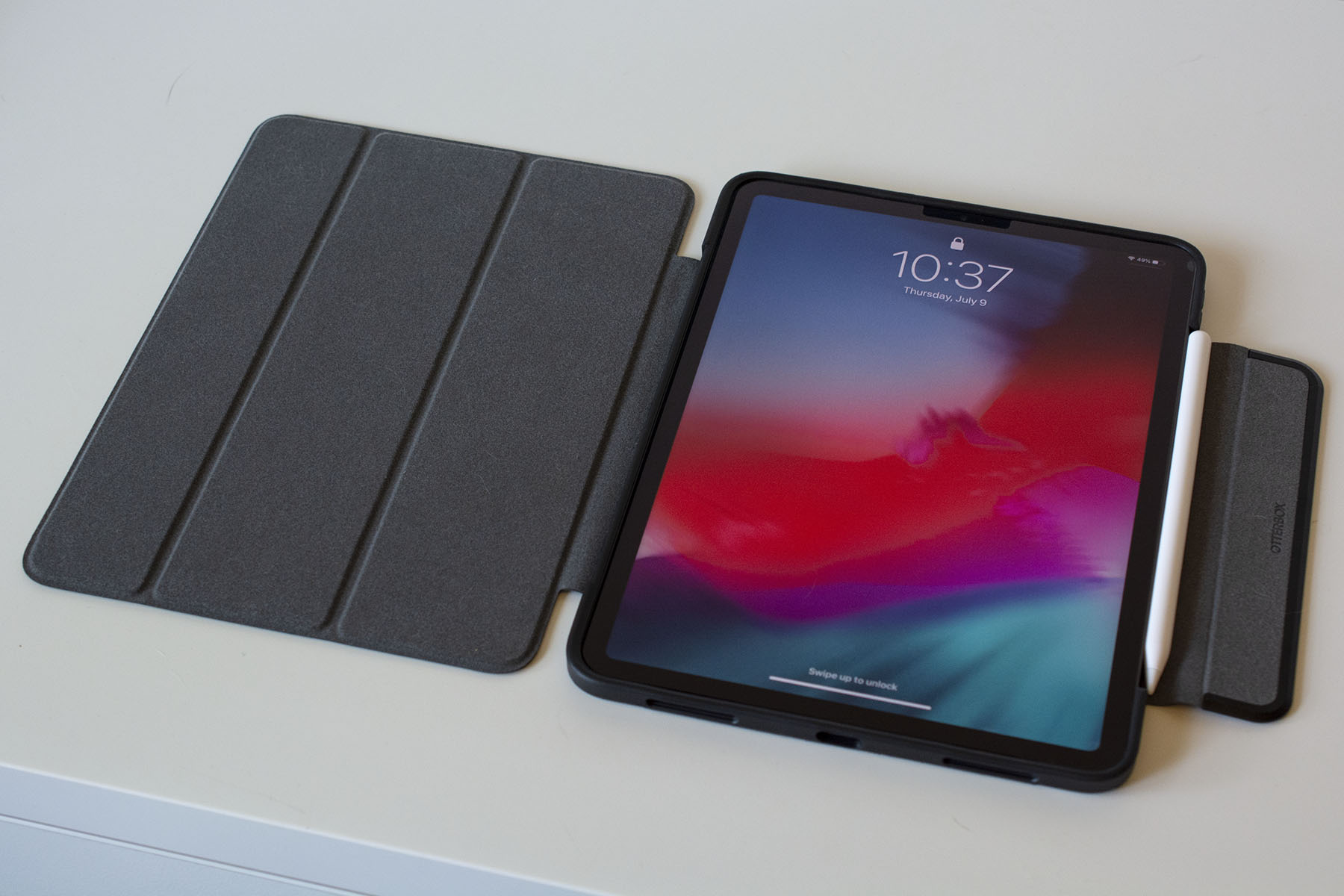
I’ve always been that person who takes her new smartphone or tablet out of the box and immediately puts it in a case. While some detest hiding the true form of their new gear, it’s undeniable that cases provide protection for probably the most expensive tech you own. Apple’s Smart Covers for its various iPads are fine, but they’re overpriced and most of them don’t give your iPad any edge protection. Similar alternatives abound, some of which do surround the edges of an iPad. I’ve found ProCase and MoKo make some of the best — even better, they cost a fraction of what Apple’s Smart Cover costs.
If you’re willing to spend a bit more on a case, get something that combines protection and style. Otterbox is an expert when it comes to protection, but its Symmetry Series 360 series shows that it also has the design chops. Symmetry cases look similar to the Smart Cover, but the clear, scratch-resistant back is sturdy without adding a lot of weight to the iPad and the edge protection is substantial. I also like the extra flap Otterbox added that keeps the screen cover closed and holds the second-generation Apple Pencil to the side of the iPad Pros. Symmetry Series 360 cases are available for most new iPads, and while they’re expensive at $90, they’re worth it if you want a great balance of protection and style.
Buy Otterbox Symmetry 360 case at Amazon – $55
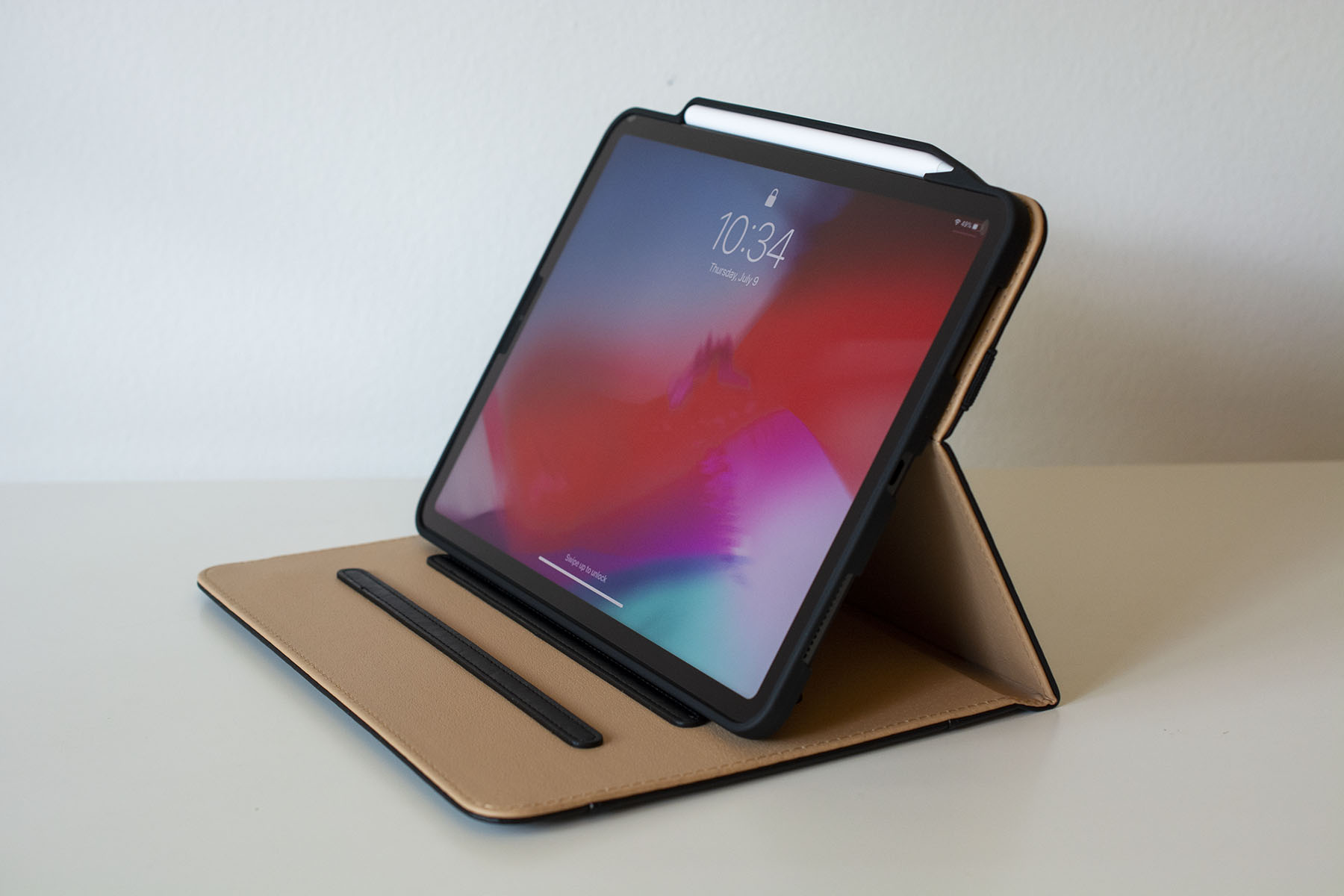
A more affordable alternative is ProCase’s Leather Folio. While ProCase isn’t as well known for protection as Otterbox is, this model has a flexible plastic interior that wraps around most of the iPad’s edges to keep it secure. The lining also surrounds the second-gen Apple Pencil while it magnetically charges against the new iPad Pros, making it one of the more secure cases for those that have the Pencil.
Leather folios will appeal to a certain type of person. I didn’t think I was that person — until I tried this case. Not only is it attractive, but it’s practical. It has a pocket on the front flap, three notches on which to prop up the iPad at different viewing angles and an elastic strap that can either keep the folio closed or hold the front flap against the back of the iPad while you’re using it. It’s definitely worth its $18 list price for those that want a case that’s just as practical as it is professional.
All of the cases we like prop up your iPad in some way, but they aren’t the best if you want the device at a comfortable eye level. You’ll want a dedicated tablet stand for that, and there are several out there that let you adjust height, angle and more. Anozer’s foldable tablet stand is a good option if you’re often on the go. It’s heavier than other stands at one pound and it can be folded (mostly) flat so you can easily throw it in your backpack. While it’s best suited for 7- to 13-inch tablets, it can support certain smartphones, too (or you could get the company’s dedicated smartphone stand instead).
If you’re willing to sacrifice flexibility for something more elegant, Elago’s P2 stand for iPad may be a good fit. It’s made of a single piece of aluminum with a ledge for your iPad and a few well-placed cutouts that you can snake a charging cable through. The ledge is also wide enough to accommodate most iPad cases. It may not be foldable or adjustable, but its minimalist design will make it an attractive addition to your desk.
Buy ProCase Leather Folio at Amazon – $17Buy Anozer tablet stand at Amazon – $15Buy Elago P2 stand at Amazon – $20
Keyboards
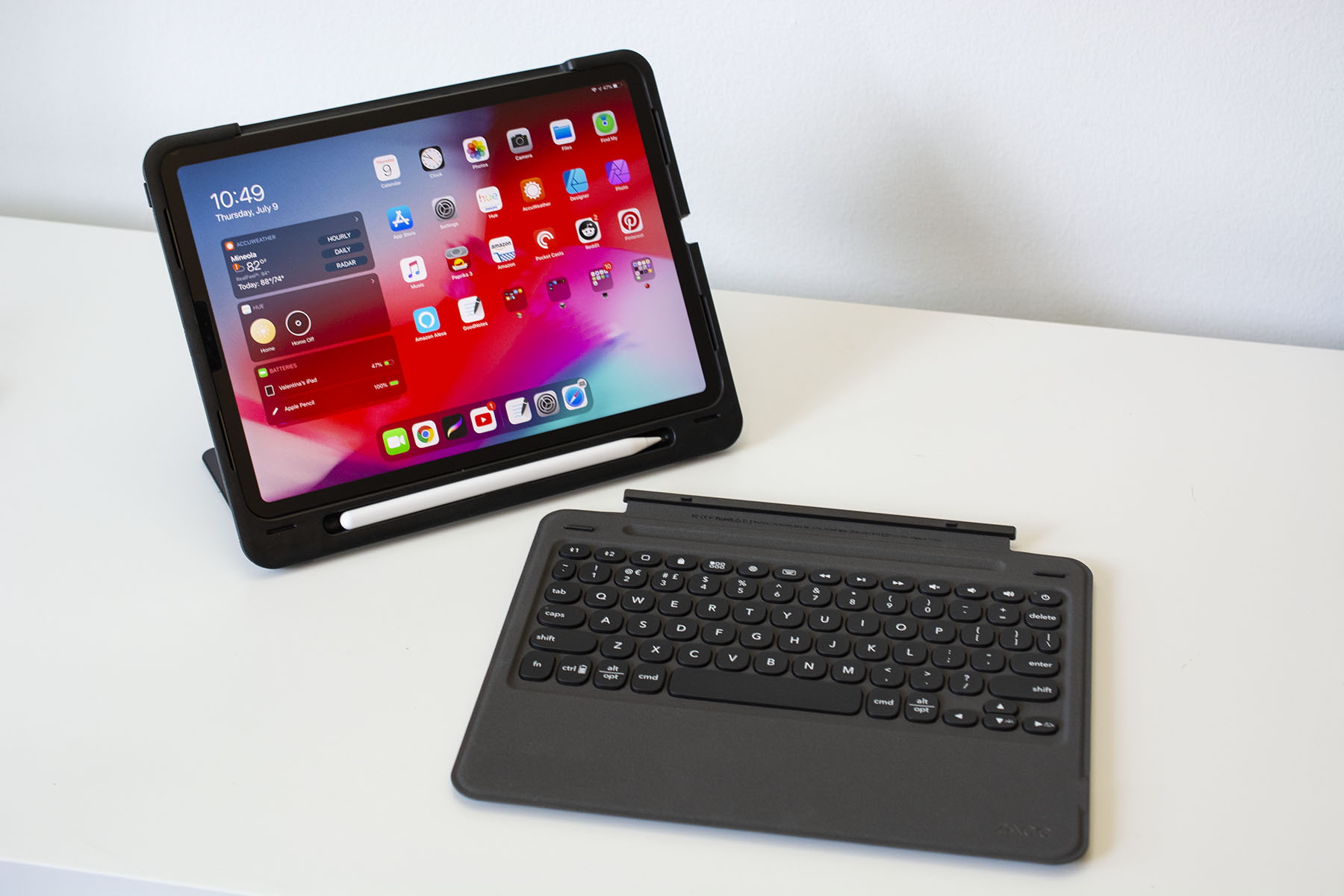
There are two types of people that seek out keyboards for their iPads: those who want something more comfortable than the on-screen keyboard for banging out the occasional email, and those that plan to use their iPad as a fully-fledged laptop. If you’re part of the first crowd, there are tons of inexpensive Bluetooth keyboards that will do the trick.
I’m partial to Logitech’s Keys to Go, an ultra-slim keyboard that almost disappears in your bag. It’s without a doubt one of the most portable Bluetooth keyboards you’ll find and it’s fairly comfortable to type on. Yes, the keys have little travel and a bubbly feel to them, but they’ll let you compose a quick email or respond to a message on Facebook much more easily than you could with the touchscreen. I also like that its wipeable fabric prevents spills and dirt from getting inside the keyboard. Plus, at around $60-$70, it won’t break the bank.
If you fall into that second category of shopper, there are even more options for you. The most luxurious comes from Apple itself in the Magic Keyboard. The $300 case magnetically attaches to the new iPad Pros and keeps them “floating” above the keyboard and trackpad. We praised the Magic Keyboard for its typing comfort and precise trackpad, but docked it for its limited range of motion. It’s easily the fanciest keyboard available for the iPad Pros and it’s one to consider if money is no object — or if you want the most stylish (and arguably most comfortable) keyboard money can buy.
Buy Keys to Go at Amazon – $70Buy Magic Keyboard at Amazon – $290

But as far as protection goes, the Magic Keyboard provides basically as much as Apple’s Smart Cover (which isn’t much). If you need something a bit more durable (and don’t want to spend $300), Zagg’s $30 Slim Book Go could do the trick. It’ll keep your entire setup pretty sleek as its name suggests, and it’s even thinner than the $130 Logitech Slim Folio Pro. The latter case may be on the thick side, but it has a well laid-out keyboard and a secure flap that holds the Apple Pencil against your tablet.
If you want something that combines durability with style, we like Logitech’s $160 Folio Touch keyboard case. Its exterior is made of a tweed-like fabric, so it will blend in better with your briefcase or work bag. It’s also fairly slim and has a similar Apple Pencil-friendly flap that closes the whole thing shut. Plus, the keyboard is joined by a small yet useful trackpad, so you can truly use your iPad as if it were a laptop.
Buy Zagg Slim Book Go at Amazon – $30Buy Logitech Slim Folio Pro at Amazon – $130Buy Logitech Folio Touch at Amazon – $160
Stylus and screen protectors

This likely won’t come as a surprise, but the Apple Pencil is the best stylus you can get for the iPad. Both the first- and second-generation Pencils are designed to work specifically with iPads and it shows in their seamless writing performance. The second-gen stylus has a double-tap feature that you can customize to a certain degree, and pressure-sensitivity allows you to add as much or as little detail as you want to digital artwork. I highly recommend shelling out $100 or $130 for the Apple Pencil if you’re an artist — you won’t be disappointed.
But there are other options, too. Logitech’s Crayon is more affordable at $70 and it has arguably a better grip than either Apple Pencil. It’s just as good in terms of latency and accuracy — drawing in Procreate was a lag-free experience and my strokes always ended up exactly where I wanted them to be.
Buy Apple Pencil (1st gen) at Amazon – $95Buy Apple Pencil (2nd gen) at Amazon – $125Buy Logitech Crayon at Amazon – $70
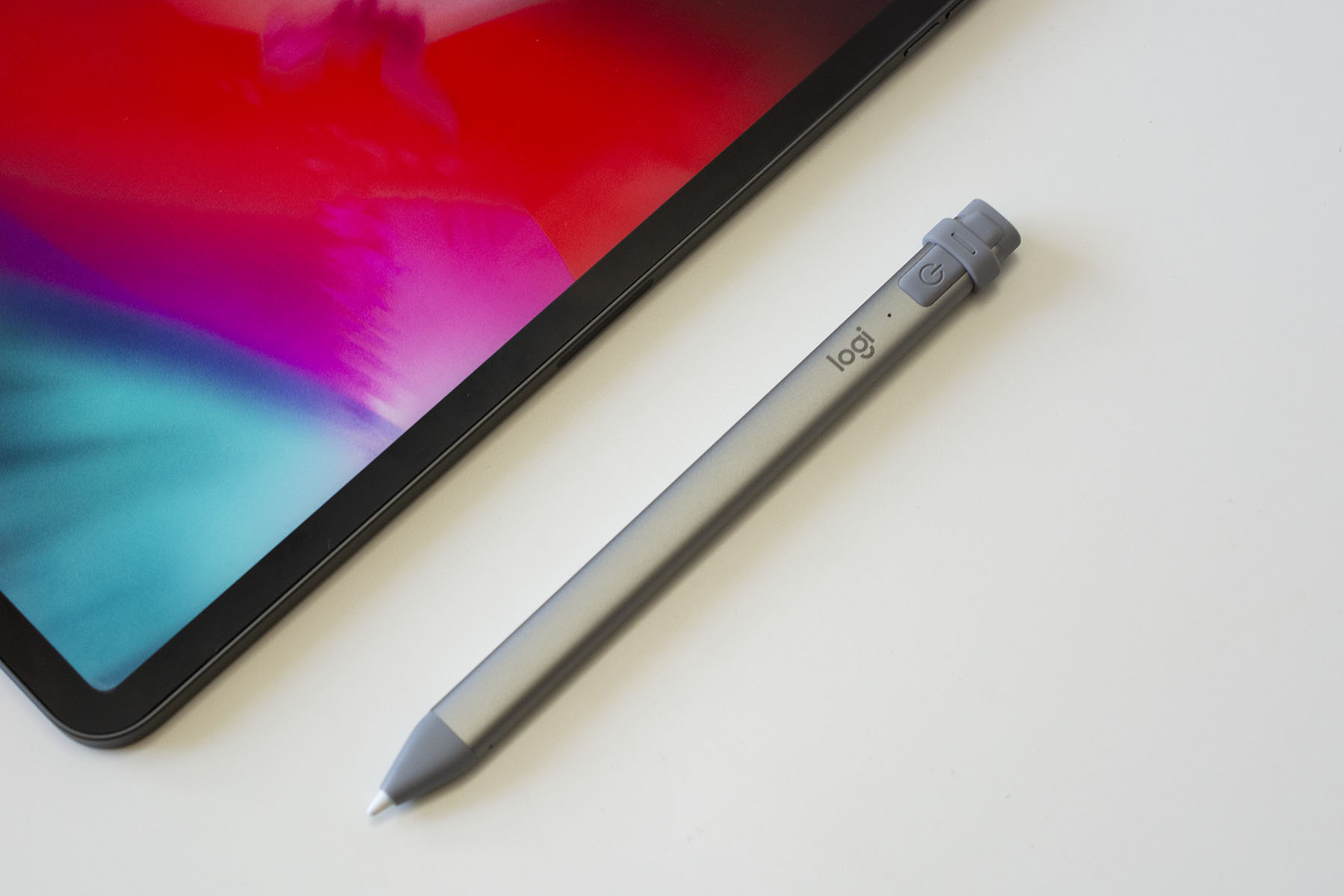
But as someone who primarily uses an Apple Pencil for digital art, I missed pressure sensitivity when using the Crayon. Aside from that, the other biggest annoyance is that you have to use a Lightning or USB-C cable to charge it (even the newest model for the iPad Pros doesn’t magnetically attach to the tablet for charging). While I wouldn’t recommend the Crayon for serious artists, I would recommend it for anyone who’s on a strict budget, especially digital journal-keepers, hardcore note-takers and the like.
If you’re a heavy user of the Apple Pencil or some other stylus, you should consider getting a screen protector for your iPad. They pull double-duty: not only do they act as a first line of defense if your iPad goes careening onto the concrete, but they can also enhance the digital drawing and writing experience. Using a stylus on an iPad is strange at first because gliding the stylus nib over a glass surface feels nothing like “normal” writing. Matte screen protectors can get closer to replicating the pen-on-paper experience, and they also prevent the stylus nib from wearing down so quickly. Paperlike is the most popular in this space, but Bersem’s screen protectors are a great value at $14 for a pack of two. Not only does the matte finish help when you’re drawing or taking digital notes, but it also reduces screen glare and doesn’t interfere with FaceID on the newest iPads.
Buy Paperlike screen protector starting at $40Buy Bersem screen protectors (2 pack) at Amazon – $14
Hubs and adapters
If you plan on pushing your iPad Pro to its limits as a daily driver, you’ll probably need more than the tablet’s single USB-C port. Apple has provided little guidance to which USB-C hubs and adapters work best with the iPad Pros — there’s no MFi certification for accessories like this yet. Some hubs specifically advertise that they work with the newest iPad Pros, and if you want to be extra safe, I recommend buying one of those that comes from a reputable brand.
A newcomer in this space is Satechi’s $100 aluminum stand and hub, a foldable rectangle that cradles your iPad and provides a bunch of useful ports and charging capabilities. The holder itself rotates outward, revealing a hidden, attached USB-C cable and a rubber bumper that keeps the stand in place in your desk. On the back edge are a 4K HDMI socket, one USB-A port, a headphone jack, both SD and microSD card slots and a 60W USB-C connection for charging.
I liked the versatility of Satechi’s hub. I could easily use it when I needed to prop my iPad up to watch a YouTube video, and by just plugging in the attached cable, I could switch to using my iPad as more of a work device with all of the necessary connectors in place. It’s also surprisingly light at 10 ounces. Combine that with its foldable design and you have a full-featured hub that can easily be stuffed in a bag.
Buy Satechi stand and hub at Amazon – $100
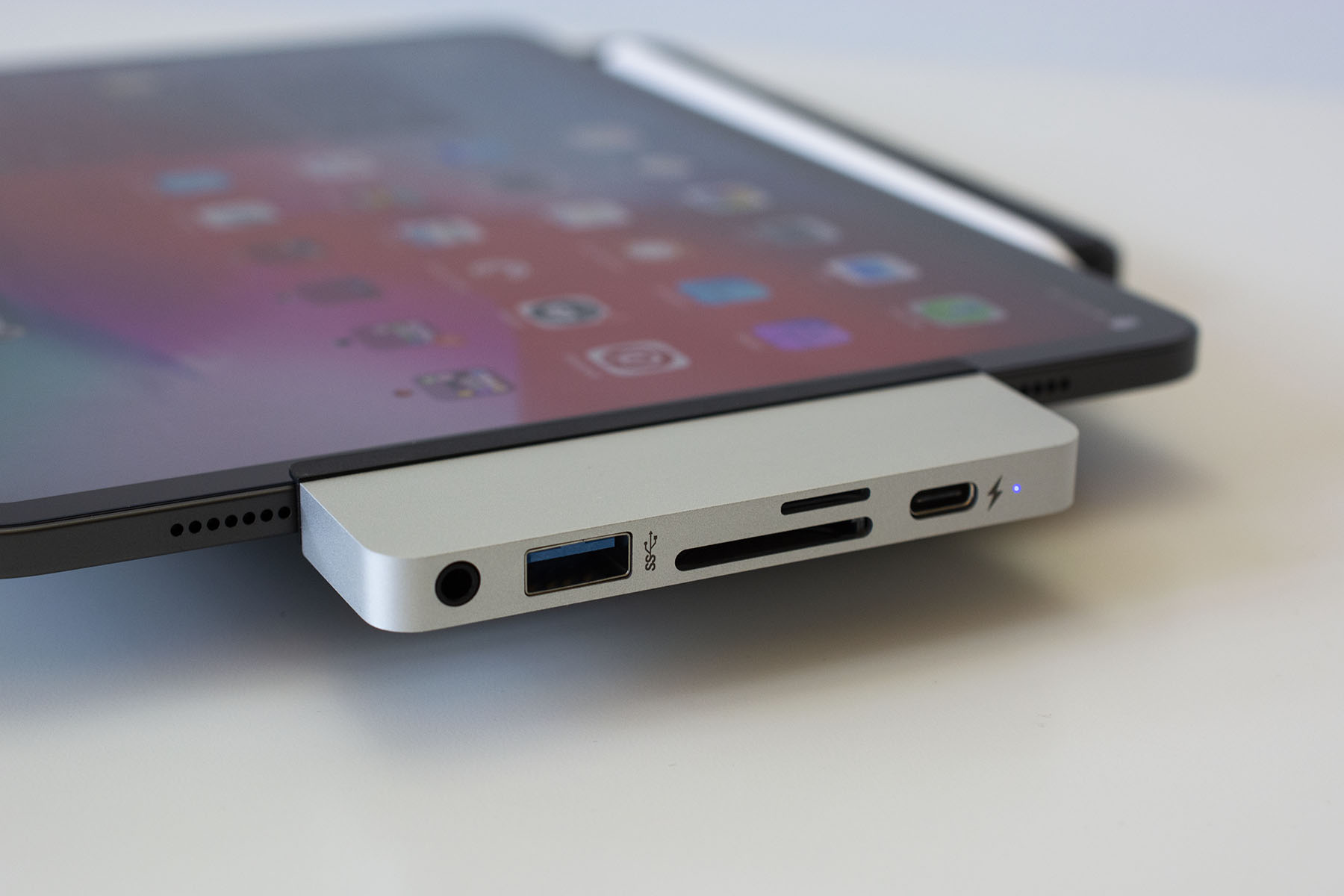
Another popular option is HyperDrive’s USB-C adapter. I’ll admit I was skeptical about this one, mostly because so many Amazon reviewers and YouTube personalities have raved about it (and I have a hard time believing a six-port adapter the size of a lighter should cost $90). However, after testing it out, I can say it delivers on its promises: t’s a neat little adapter that’s just large enough to fit an HDMI socket, a USB-C port, a USB-A connection, micro- and regular SD card slots and a headphone jack on its edges. That should cover most things you’d need an adapter for, save for hardwired internet.
However, what sets the HyperDrive USB-C adapter apart is that it comes with a tool kit that gives you more flexibility in how you use it. The default plate that surrounds the USB-C plug fits iPads without screen protectors, but there’s an included plate that accommodates screen protectors. HyperDrive even included a third plate with a dongle-like attachment so the adapter doesn’t have to sit right up against the iPad. All you need to do is use the tiny screwdriver that’s in the box to switch out the plates.
I think that somewhat justifies its $90 asking price. So many adapters that hug the iPad Pro’s edges are slick but they become basically unusable if you have a case, skin or screen protector.
Buy USB-C adapter at HyperDrive – $90
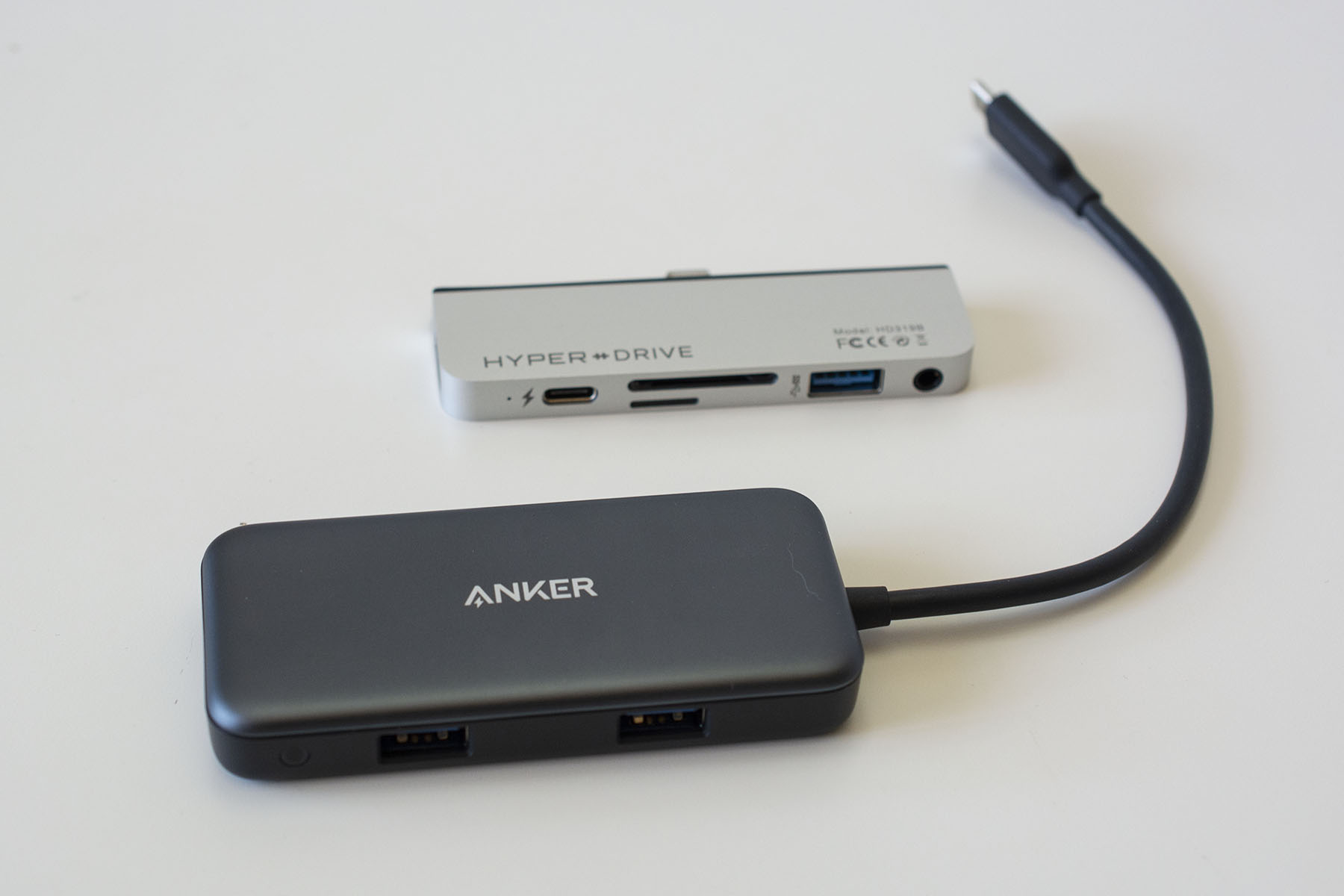
But $90 for an adapter is still a lot of money and I’d only recommend spending that much if you plan on using the iPad Pro as your daily driver. A cheaper alternative is Anker’s 5-in-1 USB-C adapter: It works just as well as HyperDrive’s; has most of the same ports, with the exception of an extra USB-C port and a headphone jack; and costs only $26.
You could use any of these adapters to connect an external drive to your iPad for more space. We’re fans of Samsung’s T7 series and SanDisk’s Extreme drives for those that want a good amount of extra storage in a fairly durable yet pocketable gadget. If you’d prefer something even more portable, SanDisk’s Dual Drive Luxe flash drive is a good option because it can plug right into your iPad’s USB-C port, it’s available in up to a 1TB capacity and it’s small enough to attach to your keys.
Buy Anker 5-in-1 adapter at Amazon – $30Buy Samsung T7 drive at Amazon – $80Buy SanDisk Extreme drive at Amazon – $85Buy SanDisk Dual Drive Luxe at Amazon – $50
Chargers and power
A battery pack or an extra charger is important to have in your bag regardless of where you’re going. RavPower’s 26,800mAh power bank can charge iPad Pros 1.5 times using its 30W USB-C PD port. It also works with the newest MacBook Pros and other USB-C laptops in addition to the Nintendo Switch — so it can be your one-stop-shop for all your charging needs. I also appreciate that it comes with its own USB-C to C cable, so you don’t need to remember to bring one with you, as well as the micro-USB cable used to charge the power bank itself.
RavPower’s PD charger will set you back $60, but you can opt for the $50 Anker Powercore Essential PD charger if you want to spend a bit less. Its 20,000mAh capacity will provide at least 50 percent more juice to most iPads. It’s not ideal for larger devices like laptops, but it works well with smartphones and tablets.
You also don't want to rely solely on the charging adapter that came with your iPad; it's handy to have a backup. Anker's new line of GaN II chargers has a couple of good options, and arguably the best for most people is the 45W Nano II. It's the midrange adapter in the lineup and it can power up a 2020 11-inch iPad Pro up to 30 percent faster than Apple's default adapter. In just a half hour of charging, I got about a 33 percent boost in battery life on my 11-inch iPad Pro. Anker's device is also smaller than Apple's and it has a foldable design, so it'll fit better in cramped spaces and it'll be easier to throw in a travel bag.
Buy RavPower 26,800 power bank at RavPower – $60Buy Anker 20,000 power bank at Amazon – $50Buy Anker Nano II 45W GaN charger at Amazon – $36
Accessories will be key whether you’re turning your new iPad into a laptop replacement or just trying to protect it against daily-life hazards. It’s tempting to turn to Apple’s own accessories — and in some cases, you should — but there’s a slew of alternatives that work just as well…
Recent Posts
- Chevy Silverado EV turns into a mobile generator with GM’s new home energy bundle
- Acer announces its new Chromebook Plus 514, and I couldn’t be more excited
- World of Warcraft getting an Xbox release is still the ‘dream’ says executive producer
- The 5 best mechanical keyboards for 2024
- Playdate has sold 150,000 games in the last year
Archives
- April 2024
- March 2024
- February 2024
- January 2024
- December 2023
- November 2023
- October 2023
- September 2023
- August 2023
- July 2023
- June 2023
- May 2023
- April 2023
- March 2023
- February 2023
- January 2023
- December 2022
- November 2022
- October 2022
- September 2022
- August 2022
- July 2022
- June 2022
- May 2022
- April 2022
- March 2022
- February 2022
- January 2022
- December 2021
- November 2021
- October 2021
- September 2021
- August 2021
- July 2021
- June 2021
- May 2021
- April 2021
- March 2021
- February 2021
- January 2021
- December 2020
- November 2020
- October 2020
- September 2020
- August 2020
- July 2020
- June 2020
- May 2020
- April 2020
- March 2020
- February 2020
- January 2020
- December 2019
- November 2019
- December 2011